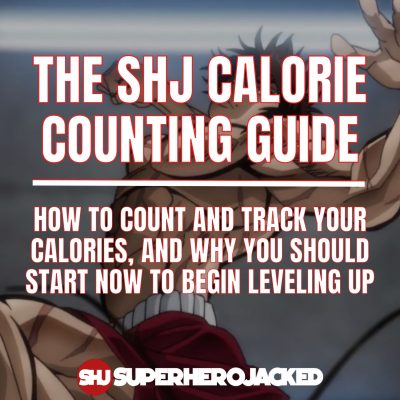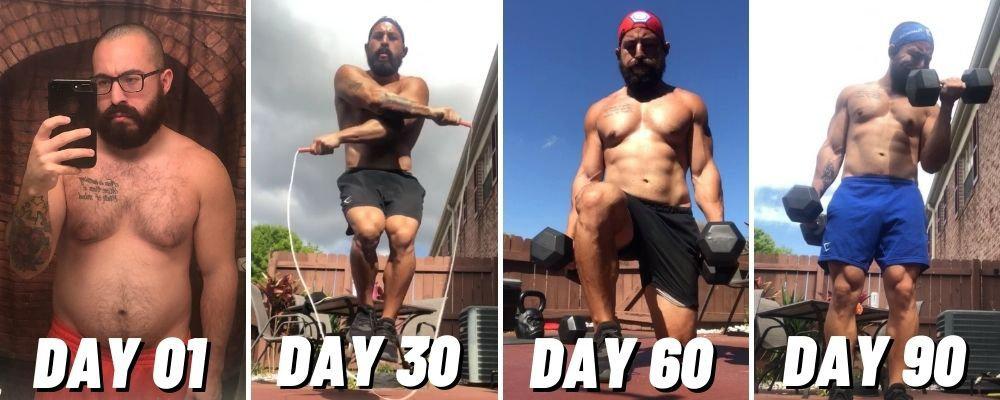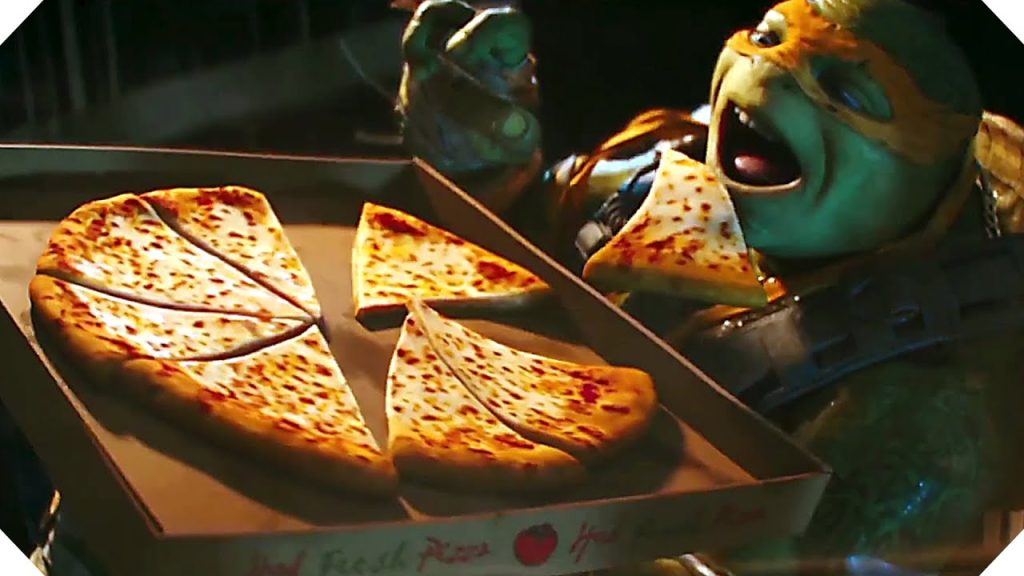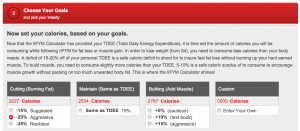Last updated on December 1st, 2021 at 03:08 pm

Calorie counting is something you NEED to do at least once in order to learn the ins and outs of what is actually in the food you’re eating on a daily basis.
From there you can begin eating “intuitively”, which will still need you to be under your calories to lose weight or over your calories to gain weight, but without specifically tracking so precisely and/or “counting”.
So don’t be scared.
I know it can be daunting to start – but I promise you it’s really not a ton of work, and it will allow you to free up your diet in ways you couldn’t begin to imagine.
After researching hundreds and hundreds of celebrities and the world’s most elite performers and athletes I learned all about the top diets they use.
I even wrote my book Superhuman Secrets on all my research into their training and nutrition with dozens and dozens of case studies.
I also learned that a LARGE majority have their favorite go-to cheat meals and more than you’d imagine include daily indulgences (often built into their diet by them or their nutritionists/trainers) to promote sustainability.
Which is why we also do exactly that within our 4-Tier-Nutrition System.
That and the fact that IT WORKS.
But, before I get ahead of myself, I want to share some other resources you should be pairing this article with to get the best results:
In conjunction with this article, these four articles make up our 4-Tier-Nutrition System.
You can take a full course on all of my research and a breakdown of our 4-Tier-Nutrition System, with much more depth than these articles (and our exclusive calculators, recipe index, fast food index, and more) within our Academy.
Here’s an example of some of the success I’ve personally had with our 4-Tier-Nutrition System (and calorie counting) after a rough move of The SHJ Headquarters down to Florida leading right into an scary covid experience (for myself and small businesses and SHJ in general):

What is a calorie?
I guess the most obvious way to start this off would be to first discuss what a calorie is. Let’s take a look at the basic definition given to us by Google.
cal·o·rie
Thanks Google.
I mean, that definition doesn’t really help me, so I’m just going to assume it doesn’t help you much either.
I like to break calories down into what we really are going to be thinking about; what we’re going to be counting when we say “Calorie Counting” and “If It Fits Your Macros”… Yeah, you guessed it – macronutrients.
You CAN track calories without tracking ALL your macronutrients, but either way you will need to know your overall daily intake for calories.
We specifically recommend tracking overall calorie level and daily protein intake and letting carbs and fats fall in place. More on this below.

What are macronutrients?
I gave one away already, but there are three of them that you need to know.
- Carbohydrates
- Proteins
- Fats
All of these macronutrients make up your overall caloric intake. Each gram of the macros you intake are worth a specific count of calories. Carbohydrates are worth 4, Proteins are also worth 4, and finally Fats are worth 9.
Quick Equation
Let’s make it a little more clear.
Let’s count up how many calories it would be if you had a total of these macros listed on a nutritional facts label:
- 5 grams of Fat
- 15 grams of Carbs
- 20 grams of Protein
Please place your bets now…
So you would look at this calculation like this:
- 5 grams of Fat (each worth 9 calories) = 45 calories
- 15 grams of Carbs (each worth 4 calories) = 60 calories
- 20 grams of Protein (each worth 4 calories) = 80 calories
Making the total calories a whopping 185!
Did you get it right?
Recommended Macronutrient Breakdown (Optional)
We know there will be a breakdown in the macronutrients that we’re intaking.
That breakdown is highly adjustable and ranges all over the place in almost everywhere you’ll search. For example, MyFitnessPal, an app I HIGHLY suggest using to track your food and caloric intake – allows you to adjust your percentages but they will often start you at a 50/30/20 range. (C/P/F)
That being said, I like to suggest my own numbers when it comes to cutting and keeping on mass, or even clean bulking. Since I never suggest dirty bulking, because I think it’s important to continue eating clean, I don’t need to adjust any percentages.
The numbers I’m currently running MyFitnessPal at are: 35/35/30 (C/P/F)
Do I have to track my macronutrients to track my calories?
No. Absolutely not.
This part is extremely important.
It was relevant and necessary to explain what macronutrients are, and even a breakdown of how I personally choose to break down my macros [when I’m tracking them – which is very rarely] – but you DO NOT have to track all your macronutrients.
Actually, the only thing we track within The 4-Tier Nutrition System is:
- Overall Calorie Intake
- If you’re looking to lose fat you need to eat in a deficit.
- If you’re looking to gain mass you need to eat in a surplus.
- Overall Daily Protein Intake
- This is the only macronutrient we track and then we let carbs and fats fall into place.
- This is important because it will help us gain and/or maintain muscle rather than gaining fat or losing muscle (which we don’t want).
- I’ll also mention this below, but we use 3 different levels of protein intake for our members within our systems to make it easier for every level of fitness and goal to follow our systems.
Don’t let anyone tell you that you have to track all your macronutrients.
Weight loss happens from being in a daily deficit of overall calories.
Protein is something that will allow us to manipulate our muscle – whether that is maintenance or gains.
So even if we didn’t track a single macronutrient, we could still lose or gain weight.
How do I figure out what my caloric intake should be?
Alright, first I’ll give you a nice step by step process to easily get your caloric intake and then I’ll tell you how it all works.
Step One: Use the IIFYM Calculator
**Please note: We use a specific calculation for SHJ Members within The Academy and other SHJ Programs. Our calculations adhere to my research and also include 3 different levels of daily protein intake that work around different goals and fitness levels.**
That was easy, huh?
Here’s what mine looked like (you can click to enlarge the pic)…
So it’s telling me my daily maintenance level is roughly 2500 calories. It’s also telling me that if I want to cut I’d be around 2000 calories (which is what I will eventually utilize, just hang in there), and if I want to bulk I’d be around 2700-2800 (I’d say aggressive range 3000 is more than doable as well).
Step Two: Plug your goal caloric intake into MyFitnessPal (don’t forget it’s available as an App on your phone), and also change your ratios for your macronutrients to 35%/35%/30%.
(You can insert your macronutrients ranges and then simply track overall calories and protein levels as suggested above by just ignoring the other two and letting them fall in place like we do within our systems here at SHJ.)
Step Three: Stay under your caloric intake each day if you’re cutting and hit or go slightly over if you’re bulking. Eat!
Where are these numbers coming from?
Luckily enough I’m able to use 2500 as a Maintenance level for myself because that is what IIFYM calculated for me. That means that if I eat 2500 calories each day I will continue to stay at my exact weight. (Keep in mind, that’s not taking into account macronutrients so fat and muscle gain/loss is a whole different ball game)
Now for a whopper. One pound is said to be equal to 3500 calories.
That means in one week (7 days people), if your calories are under your maintenance level by 500 EACH DAY, you’re going to be under a total of 3500 for the week. In turn, you will have theoretically burned one pound. Now, that also doesn’t take into account your cardio and training (which I don’t plug into MyFitnessPal so it just accelerates my cut), so hopefully if you’re incorporating that as well you’ll be off to a great start and burning more than the pound.
The same goes for bulking. Same numbers. If you’re over 500 calories per day for a week, you’ll be over your maintenance level by 3500 calories at weeks end; theoretically adding an extra pound to your body.
BOOM! That was pretty easy.

How do I actually TRACK my calories?
As I mentioned above, I use the app “MyFitnessPal” which you can download on your phones app store.
From there you simply insert your daily meals one by one.
After you set up the app it really is quite simple and self explanatory – but there are some things I do want to specifically note.
For example, you don’t have to use this specific tracking app. You could just as simply use a paper and pen and write down each ingredient and calorie you eat every day while adding them up as you go.
I say “simply”, because tracking really is that simple, but in this case I don’t use “just as easily” because in my opinion using a paper and pencil is definitely not as easy as letting an app do all the math for you.
Another great part about using an app like MFP (I am in no way affiliated with them, by the way), is that they have thousands and thousands of foods already built into their systems for you.
So if you order a Big Mac from McDonalds you can go right into your app and type in “Big Mac” or even McDonalds for the menu, and there you go – click and insert and done.
The same goes for cooking and food shopping.
You can simply buy ingredients or products from the store and then either look up that specific product or even scan the barcode into the system and then boom it’s right there in your app for you to choose how much you ate (or are planning to eat).
Some Tips for Avoiding Tracking Errors
Tracking can definitely have a learning curve to it and can definitely seem a bit daunting at times when you’re just getting started.
The term “counting calories” and “tracking calories” have somehow become names for diets where-as I prefer people at least begin tracking/counting in order to be calorie aware.
Calories are what will cause you to gain or lose weight…REGARDLESS of what diet you follow.
Let me make that a bit more simple: Even if I was to program you the Keto diet, you would still need to track your calories to lose weight, because you would still need to be under your calories in order to do so. People cut an entire macronutrient (carbs) and do end up losing weight due to the caloric restriction that comes with it (on top of water depletion that takes place).
Think about it…can’t people also gain weight while following diets like Keto, Paleo, Vegetarian, etc.?
If not, how would you possibly build muscle mass? You have to be in a surplus of calories to do that.
So let’s break down some tips for avoiding tracking errors that will allow you to become more calorie aware:
- You must track EVERYTHING.
- One thing that people don’t realize when they first start out is that everything must be tracked. This includes soda, beer and liquid calories; butter and other products you’re adding to your food to make it taste better (condiments, syrup, ketchup, etc.) and everything else.
- Do NOT eat more calories because you’re burning calories!
- A lot of calorie counters, including MFP, will track the calories you’ve burned for the day as well (your daily activity). If you’re using a calorie calculator like the ones we utilize at SHJ inside our Academy the calculator will include calories within the calculations of your overall daily intake to avoid potential errors that can occur when calculating based on your specific goals and stats. For that reason: if you eat more calories because you’re burning calories with exercise you are just eating more calories and will make it harder to lose weight (if that is your goal). These calories are usually already built into your programming (overall number).
- You have to make meals CUSTOM if they’re custom.
- For example: If you order a meal from Subway that is double meat, extra cheese and has add-ons that aren’t normally included in that specific sandwich/sub then you have to include that within your tracking. You cannot simply add “Turkey Sub” from Subway into your calorie counter and expect it to know you got a footlong with double meat, extra cheese, and extra mayo.
- The same goes for the meals you make at home. You have to make sure you’re tracking each ingredient that goes into the meal and measure to make sure your tracking is right. The difference between just a small amount of butter or peanut butter (as two easy examples people struggle with) can be a big impact on your overall daily intake.
That being said…just get started!
It doesn’t matter if you track to be in a deficit or surplus right this second, you can start “tracking” by simply becoming more aware of calories and entering them into your app and taking an overall look at your daily intake.

Why is tracking and staying over/under my calories important?
Let’s take a look at some of the information from my article on The Two MAIN Reasons Why You Can’t Lose Weight or Transform Your Physique:
We took a look at a weekly chart breakdown last time that involved some weekend splurges and it showed a great example of how staying on track Monday-FriDAY but cheating Friday night through Sunday can really alter your entire transformation.
Here’s what I shared:
Assuming 2,000 calories would allow us to lose 1 lb. per week of targeted fat:
- Monday: 2,000
- Tuesday: 2,000
- Wednesday: 2,000
- Thursday: 2,000
- Friday (Night out drinking): 3,500
- Saturday (Family Dinner): 3,500
- Sunday (Football Sunday, bro): 5,000
Where does that leave us?
Well, we WOULD have been 3,500 total calories under (which is equivalent to 1 lb. of weight loss), but we were OVER 1,500 calories Friday, 1,500 Saturday and then 3,000 on Sunday.
That means our weekend of an extra 6,000 calories actually not only voided out our weight loss, but it actually turned our cut into a bulk by putting us 2,500 calories OVER our BMR and nearly tacking on 1 lb. of fat instead of the loss we were shooting for.
This time I want to do ANOTHER chart (okay not a chart, but a bunch of calculations) but instead we’ll talk about adhering to our training as well.
Another issue that can be tacked ON TOP OF the above chart is tracking around a specific program but then not adhering to it (but still eating as if you ARE doing it).
For example, if I am following our Superhuman System or Behemoth Programs my caloric intake (cutting based on my BMR calculations) is around 2,000 a day.
BUT, if I’m not training (and closer to sedentary) then I should be eating roughly 1,500.
That’s a daily difference of 500 calories!!!
500 calories every single day for seven days is equivalent to 3500 overall calories for the week.
Do you know what 3500 calories is equivalent to?
ONE POUND of fat or muscle.
I don’t think we even need a chart for me to explain to you what just happened, but I’m going to spell it out one more time anyway:
If you do not adhere to your programming (which will also give you a metabolic boost and support a healthy metabolism and get us closer to an accurate BMR reading and alleviate some of the stress we get from the pain tracking can be) you can EASILY null and void all progress even if you’re dieting [to what you think] is perfect.
Instead of losing a pound of fat had you stuck to your training and shredded and toned closer to the superhero physique you’re striving for, you could easily tack on some fat with just a slight miss-track throughout the week due to not adhering to your program.
So adherence and staying on track can go both ways.

What if I can’t eat enough food?
One common misconception is that in order to lose weight you must eat enough food.
I’m not quite sure where this comes from, given that we know you need to be UNDER your calories each day in order to lose weight.
But, I suppose if I had to guess, I believe it is due to the fact that you’re given a specific number to adhere to, so people in turn think they need to eat exactly that number. This is NOT the case. You can be under that number.
Actually, I generally leave 100 or so calories between my daily intake and my goal to make up for tracking issues that can occur.
Here are a few notes in regards to this:
- If you think you are unable to eat enough but are not losing weight, you likely have an issue with overall tracking.
- You can be under your maintenance level 500-1000 calories before we consider it too low. We use specific ranges at SHJ and inside our Academy to make sure we’re not burning muscle while losing weight (that’s why you can’t drop calories below that 1,000 mark a day, and even that is pushing it.
- The same goes for gaining weight, you can (and often should) be over your surplus number. You can be over your maintenance level 500-1000 calories before we consider it too high, in which case going over it would result in unnecessary fat gain.
- People sometimes believe there is a “starvation level” they will reach if they cut down to too low of a number. 99% of the time this is incorrect and there is a tracking issue keeping people from losing weight. Daily calories are (or should be) built around YOUR specific stats and movement (exercise) – in which case a number programmed would (or should) not be bringing you into “starvation mode”.
In summary of this point in reference to losing weight: You can and should be under your maintenance level in order to lose weight/burn fat (we recommend 500-1000 calories under per day, resulting in 1-2 lbs. per week – any faster and you will risk losing muscle weight), so if you “can’t eat enough” and aren’t losing weight, you are likely experiencing a tracking error. You can even be below your cutting calorie number (under the 500-1000 calories that are already under your maintenance level) and WILL lose weight; we just don’t recommend going that low due to the possibility of losing muscle.
In summary of this point in reference to gaining weight: You can and should be over your maintenance level in order to gain weight/build muscle (we recommend 500-1000 calories over per day, resulting in 1-2 lbs. per week – and we generally try to be closer to the 250-500 mark to tack on mass slowly to ensure it’s muscle mass and not fat – any fast and you will risk gaining unnecessary fat. In this case, if you “can’t eat enough”, it will actually cause an issue if your goal is to gain weight. You HAVE to eat in a surplus of calories in order to gain weight.
Final Thoughts and Notes
Another great and important read is my article on The Four Main Components of Your Transformation.
I know I’m giving you a ton of information at once, but I promise you there is a reason for all of it.
And, if you ever want to step it up a notch and go through the course and have everything curated for you in one place with all the necessary bonus resources, you can join us inside The Academy.
There may be a lot of people who say things like:
- “Cutting calories never worked for me! I cut carbs and then I lost weight!”
- This is someone who unknowingly cut calories and then lost weight. Prior to cutting an entire macronutrient from their diet they were unable to cut their daily intake enough to be in a deficit. When first starting out adherence and tracking can definitely be hard, and that’s where the majority of the issues come from.
- “Our ancestors never counted calories so we shouldn’t either.”
- I never understood this one, but I’ll acknowledge it anyway. I mean, we’re not roaming the earth hunting wild animals and eating nothing but meat and plants – on top of a million other things we’re not doing like people prior to our tech – BUT, the biggest point is that calorie counting has absolutely nothing to do with what you’re actually eating. You can eat EXACTLY how you want, as long as you adhere to your daily intake.
- “Calorie counting is too hard.”
- I definitely agree that it can be hard at first. That’s one of the reasons I break it down step by step and do my best to make it as easy as possible within our Academy. BUT, either way there is going to be a learning curve that you are going to have to go through with the ultimate goal being able to be somewhere near “intuitive” eating.
- I personally have my own “go-to” meals that I continuously go back to and build my diet around. We work on these with our members within our 30 Day Challenges.
Hey, if calorie counting is not for you, that is completely fine.
BUT, if you want to eventually get to the point where you can eat intuitively, you should absolutely track calories and begin learning more about how many calories the foods you eat on a daily basis have in them.
This will help you with any type of diet you decide to stick to, even if that is no diet!
######
Mike Romaine
SHJ’s Nick Fury
Join The Superhero Academy and start unleashing your inner SuperHuman.

SUPERHUMAN SECRETS V.2
NOW UPDATED AND EXPANDED WITH A NEW SECTION & SEVEN BONUSES
USD$29 USD$14.95


